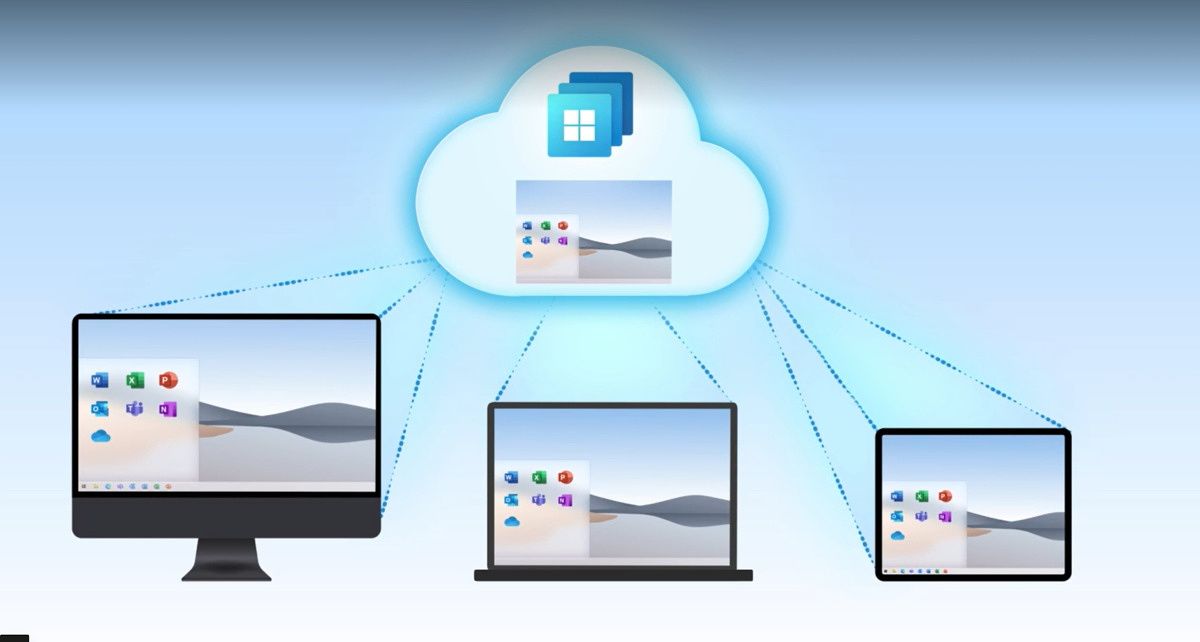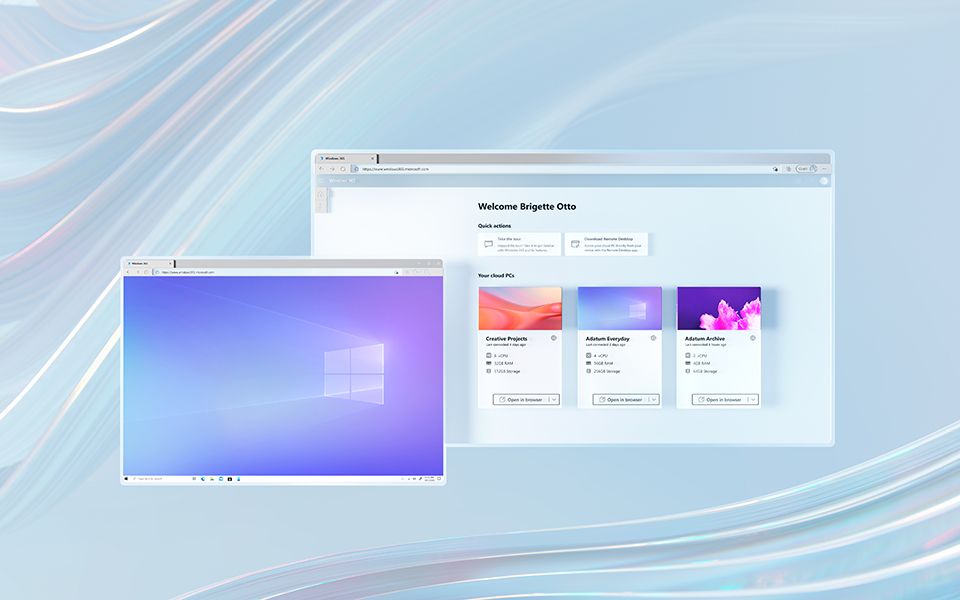Windows 365, Microsoft's Cloud PC subscription service, is available for businesses starting today. If you haven't heard, Windows 365 is a new subscription that lets users create virtual PCs in the cloud. This makes those PCs available to use on all kinds of devices, wherever the user is. It's only meant for companies, so you can't just buy a license for yourself if you want to. Microsoft also shared more details about the service today.
Microsoft initially announced Windows 365 last month, and it's not related to Windows 11. We've actually gonna into detail to explain the differences between the two, if you're interested. Windows 365 is something of a hybrid between a virtual machine and a remote desktop connection. A company can create virtual machines on Microsoft's servers, assigning a specific number of CPUs, RAM, and storage to it. Because it's on Microsoft's servers, it won't take up resources from your hardware, and you can access it anywhere. That's why Microsoft calls it a cloud PC.
You can access your cloud PCs using the Windows 365 web portal, or Microsoft Remote Desktop clients on various platforms. These include Windows, macOS, iOS, and Android, so you can really access your PC anywhere. Just like a virtual machine, all the files and apps you install on your cloud PC are yours. Any changes you make are saved, and you can install an app using one endpoint and then keep using it on another one. All your files are also there all the time.
As for the management side of things, it's also fairly simple. Windows 365 is integrated in Microsoft Endpoint Manager, so everything should feel fairly familiar. IT admins can find Windows 365 PCs in the Devices page, which also includes all of the company's devices. New cloud PCs can be created using certain pre-configured images, or admins can opt to create a custom image with the hardware and software configurations they want. Admins can also use Endpoint Manager to check on whether everything is set up to support Windows 365 properly.
Windows 365 comes in two flavors: Business and Enterprise. Business is meant for smaller companies, with 300 seats or less, while Enterprise is for larger companies. These tiers offer different feature sets. Windows 365 Business supports the ability to quickly provision a cloud PC from the product page and set up a cloud PC without an Azure domain. For the end user, it also supports resetting a cloud PC without the help of an IT admin. These features aren't available on Windows 365 Enterprise.
On the other hand, Windows 365 Enterprise supports many other features. End users can upgrade their PCs, there's integration with Universal Print, it supports the aforementioned custom images, connection to on-premises resources, and much more. Despite that, Windows 365 Enterprise is actually cheaper than the Business counterpart.
|
Feature |
Windows 365 Business |
Windows 365 Enterprise |
|---|---|---|
|
Click-to-provision directly from product page |
Yes |
No |
|
"No-domain" set up |
Yes |
No |
|
Self-serve troubleshooting - Reset |
Yes |
No |
|
Cloud save |
Yes |
Yes |
|
Self-serve upgrades |
No |
Yes |
|
Universal Print integration |
No |
Yes |
|
Partner/programmatic enablement (Graph APIs and more) |
No |
Yes |
|
Custom images |
No |
Yes |
|
Image management (store, replicate, deploy) |
No |
Yes |
|
MEM policy driven provisioning, management, and guided scenarios |
No |
Yes |
|
EA based reporting and monitoring |
No |
Yes |
|
Service health and operational health alerts |
No |
Yes |
|
Connection to on-premises resources and diagnostics |
No |
Yes |
|
Advanced MEM based troubleshooting and device management |
No |
Yes |
Windows 365 is paid on a per-user per-month basis, and the price depends mostly on the hardware you want a cloud PC to have. Pricing starts at $20 per user per month for a PC with one CPU, 2GB of RAM, 64GB of storage. That pricing applies to Enterprise customers, but the Business tier can also match that price if the company also has a Windows 10 Pro license. Otherwise, Windows 365 Business customers have to pay $24 per user per month for the same configuration. Actually, Business customers will always pay an extra $4 on top of any tier.
As for the highest-end configuration, you're looking to pay as much as $158 per user per month for Enterprise customers. That gets you eight CPUs, 32GB of RAM, and 512GB of storage, so it is a fairly powerful PC at that point. Of course, that's still much more expensive than a PC with similar specs over the course of a year or two, but that's not the point. You're paying for the ability to access your PC from any endpoint.
While the rate is mostly fixed, there are some conditions. For Windows 365 Business, PCs are limited in how much data they can send. The base tier with 1 CPU, 2GB of RAM, and 64GB of storage, for example, is limited to 12GB of outbound data per user per month, with the highest tier offering up to 70GB. Outbound data refers to files being transferred from the PC to another location. For Windows 365 Enterprise, traffic goes through the Azure virtual network, and you'll be subject to the usual Azure bandwidth pricing.
If you want to learn more about Windows 365, you can check this guide on how to get started with the Business tier, or this one for the Enterprise tier. You can also find a full list of prices on Microsoft's website.


